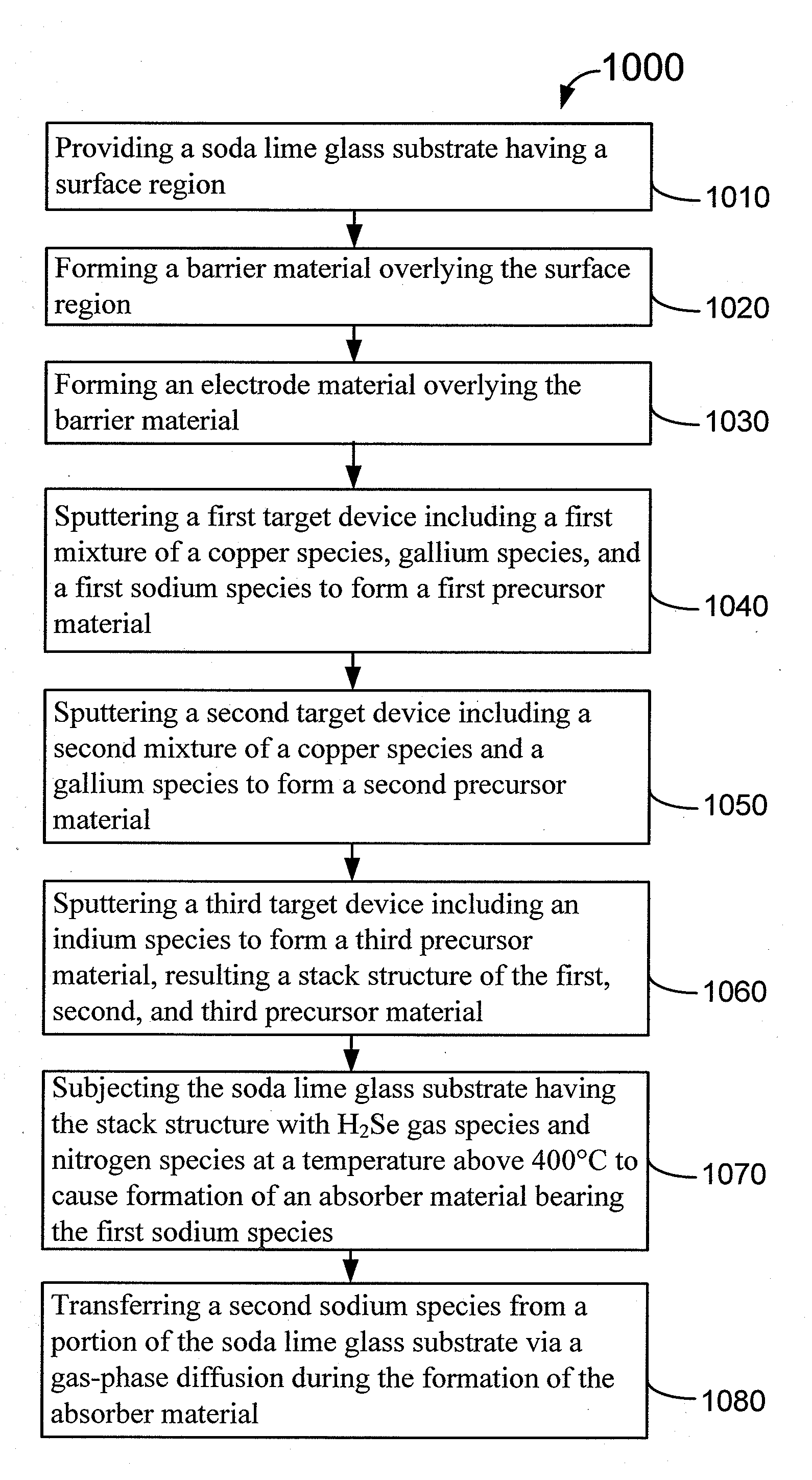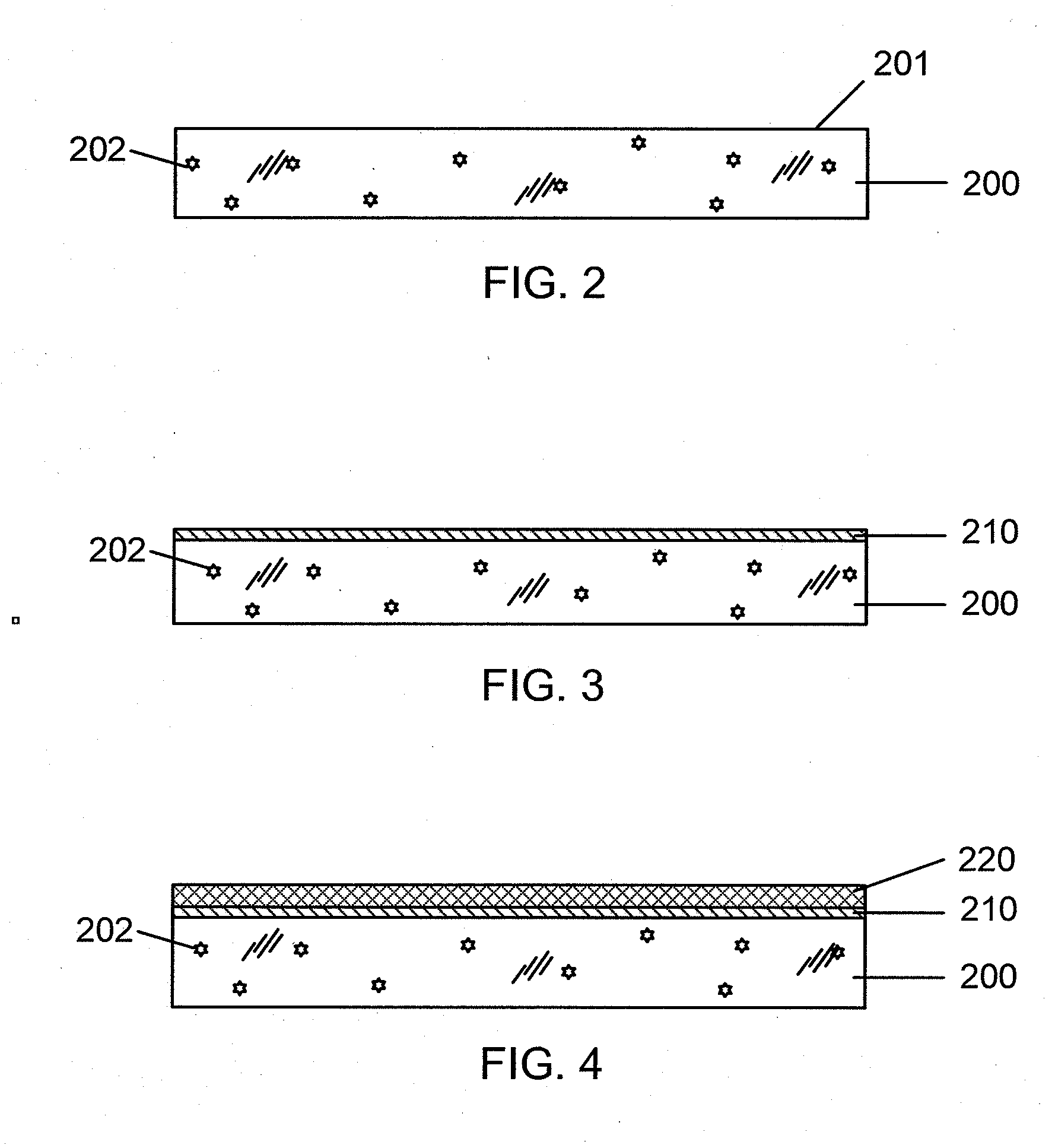Method of Manufacture of Sodium Doped CIGS/CIGSS Absorber Layers for High Efficiency Photovoltaic Devices
a photovoltaic device and absorber layer technology, applied in the field of manufacturing methods of thin film photovoltaic absorber materials, can solve the problems of limited supply of petrochemical fuel, many limitations remain to be resolved, and rapidly become a scarce resource, and achieve the effect of improving efficiency
- Summary
- Abstract
- Description
- Claims
- Application Information
AI Technical Summary
Benefits of technology
Problems solved by technology
Method used
Image
Examples
Embodiment Construction
[0018]FIG. 1 is a flowchart illustrating a method of fabricating a thin-film photovoltaic absorber material. The method 1000 includes:
[0019]1. Process 1010 for providing a soda lime glass substrate having a surface;
[0020]2. Process 1020 for forming a barrier layer over the surface;
[0021]3. Process 1030 for forming an electrode over the barrier layer;
[0022]4. Process 1040 for sputtering a first mixture of a copper species, gallium species, and a first sodium species to form a first precursor material;
[0023]5. Process 1050 for sputtering a second mixture of a copper species and a gallium species to form a second precursor material;
[0024]6. Process 1060 for sputtering an indium species to form a third precursor material, resulting a stack structure;
[0025]7. Process 1070 for subjecting the soda lime glass substrate and stack structure to H2Se and nitrogen at a temperature above 400° C. to cause formation of absorber material; and
[0026]8. Process 1080 for transferring a second sodium spe...
PUM
 Login to View More
Login to View More Abstract
Description
Claims
Application Information
 Login to View More
Login to View More - R&D
- Intellectual Property
- Life Sciences
- Materials
- Tech Scout
- Unparalleled Data Quality
- Higher Quality Content
- 60% Fewer Hallucinations
Browse by: Latest US Patents, China's latest patents, Technical Efficacy Thesaurus, Application Domain, Technology Topic, Popular Technical Reports.
© 2025 PatSnap. All rights reserved.Legal|Privacy policy|Modern Slavery Act Transparency Statement|Sitemap|About US| Contact US: help@patsnap.com



